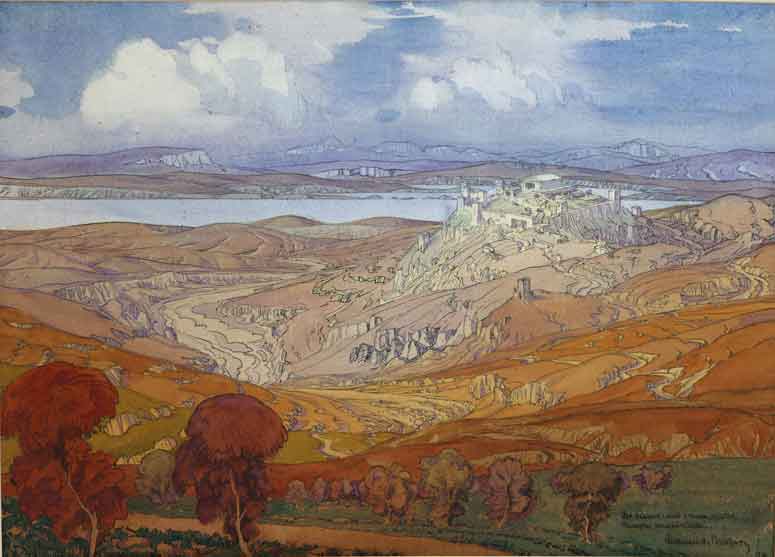In 20th-century Russian art Maximilian Voloshin is best known as a poet. But being a talented poet, he was also a talented watercolor painter, who left behind remarkable paintings. Both his poetic and artistic works are permeated by Crimea.
The immense love for this land illuminates many of his works.
In 1907, Voloshin returned from abroad to Koktebel and settled in his house, called “The House of the Poet.”
Maximilian Voloshin’s painting, presented in our museum, depicts the Crimean town of Sudak. The landscape on the canvas is deserted and detached from everyday life. On the high ground is a Genoese fortress, as if looking at us from the depths of past centuries. In the Middle Ages, Genoa was a powerful trading republic and possessed numerous colonies on the Black Sea banks, including the Crimea. The painting is done in watercolor on paper. On the bottom right is the artist’s original writing:
The gloomy land of Cimmeria
is woven of fog, and haze, and sorrow.
Music of the Crimean hills, valleys, rocks and seas is heard in Voloshin’s landscape lyrics. This nature was a part of his soul and a powerful source of his creative inspiration.
Maximilian Voloshin and the Feodosian artist Konstantin Bogaevsky were connected by a strong friendship which arose on the basis of their unlimited love and attachment to Crimean nature.
M. A. Voloshin at the Museum of Russian Art (Prof. A. Abrahamyan’s collection):
“ The Crimea. Sudak ” , 1918
From the Author's Works

The Crimea. Sudak 1918
Painting

